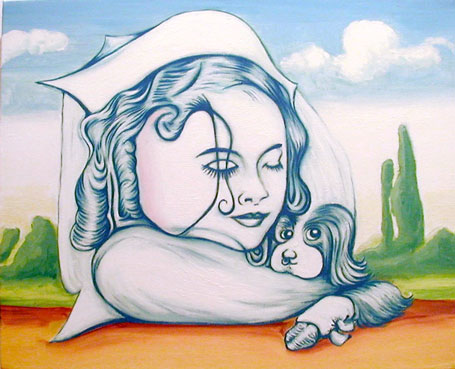|
M/E/A/N/I/N/G Online #1
|
||||||||||||||||||||||
|
Artworks can be inconvenient, often making conspicuous efforts to go against the grain. Other times they are more sociable, working hard to insinuate or ingratiate. Whether artworks adapt postures of detachment or engagement, an ineradicable quotient of ambiguity intensifies their vitality. They are, often happily, only human.
The artist's signature, along with the work's material characteristics, inflects the way it navigates and adapts to a future of unanticipated circumstances, much as we do. Alternating positions of resistance, assimilation and participation help us to thrive in different situations. This applies to the course of a day as well as the arc of a lifetime. We assimilate in order to study unfamiliar situations and learn how things work. Sometimes we don't want to be noticed. Resistance builds strength and sharpens our sense of distinction while cooperation rewards us with a connection to others. Who doesn't want to be successful? Freedom from necessity is a recurring dream and art is good at exercising a vision of this freedom. Artworks help us to imagine what freedom looks like and consequently help us to resist the status quo.
New art, for a very long time, has caused things to mean what they hadn't meant previously. It can conjure fresh meanings from familiar forms and render the perceived world like a hallucination. Art can symbolize or symptomatize contradictions and tensions in the culture and can juggle various ratios of conformity and deviance. New art has also thrived on its ability to produce confusion, sometimes for progressive ends and sometimes in the service of mayhem and disorder. Works based on deviant attitudes adapt well to the latter while eventually, perhaps, helping to serve the ever fluctuating use of style to sell consumer products. Art objects still address only one person at a time, and are lucky if they can produce confusion or any strong reaction whatsoever with their shocks and postures. We artists should not underestimate the importance of the stories we tell ourselves about how art will make a difference. These motivational fictions describe the ways a work might interact with the world to justify our extravagant, and potentially narcissistic, labors: that our art has transformational potential. A work might be understood as being critical of society or that it provides sanctuary from it, for instance, or that the work is like a Trojan horse sent to the enemy as a nasty gift to unsettle their deeply entrenched frames of mind. We need renewable encouragement to make fresh work year after year in the face of uncertain rewards. Political art glows with these motivational fictions no matter how much we may disagree with the editorial content. Paranoia provides one of the most effective sources of motivation. That's why a notion of the "spectacle" has been so engaging for artists in the last few decades. The spectacle is described in theory as everywhere, with no boundary to its insidiously embracing circumference. It can replace deity as the ubiquitous and invisible force that catches us in its address and through which our public utterances are addressed. It neither confirms nor denies our ascriptions but compels us to continue undermining its grand perniciousness.
I don't think artists are reliable, however, at making their work socially useful. Some will be more responsible than others, but the work's capacity to survive depends on its ability to produce engaging interpretations whenever and wherever it finds itself. Do we want to be good citizens or servants of a system we may or may not approve of? The inconvenience that artworks present to pragmatic or utilitarian attitudes provokes both resentment and hopefully unanticipated insight. The meaning of an artwork is promiscuously slippery, ambiguous and, like artists, not very dependable. Contexts come and go while attitudes within the work often seem to evaporate or shift. The U.K. has recently been embracing new art as an instrument of public policy to promote "diversity, access, relevance, civic pride, community innovation and social inclusion." A recent show at the Met of Renaissance art from Delft had many examples of astonishingly beautiful art that beamed with unambiguous civic pride. Does collectively embraced new art necessarily satisfy an appetite to feel good about ourselves? Works we love often seem to aid insights that come from us, not necessarily about ourselves but issuing from our best self. These special works seem to have significance above the others by virtue of their capacity to bring us a heightened sense of our singularity on the shared plane of culture. Some works almost seem to reorganize themselves as we change over the years; they grow with us and share our power to resist and assimilate. I feel the artwork's relative uselessness is one source of its enduring radical value. Maybe that's my motivational fiction. If we can't be outside the spectacle, at least our metaphors will continue the always unfinished job of imagining and desiring an outside, that perhaps things are more mutable than we thought.
David Humphrey is an artist who lives in New York.
|



